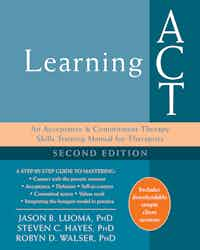Part one of a six-part series on ACT processes
Cognitive fusion is the mind’s default mode, because taking thoughts literally is helpful to problem solving and many other practical uses of language. Perhaps as a result, most of us walk around fused much of the day—including therapists! It is easy to miss fusion, especially if a client is agreeing with you, the content pushes your own buttons, or if the content seems urgent or compelling. Clients (and therapists) need enough cognitive flexibility so that they can step back from their thoughts when fusion is not working. But for a therapist to help in that process, fusion needs to be seen. That can be tricky.
Here are five signals you can rely on to recognize fusion:
1. Impenetrability. If new input and new experiences fail to modify cognitive themes, you have a clear sign of fusion. If you want to pick a single cue of this process, consider the words “yes, but.”
2. When a client says: “I’m right and I can give you the reasons.” Whenever the issue shifts from workability to literal truth, let the fusion bells ring. The line of thinking goes like this: “Maybe this isn’t the best way to think about it, but [fill in evidence here].” Explanations, storytelling, and arguing all have this feel.
3. When a client says: “Don’t you agree?” Before you agree with a client, hesitate for a second and look to see if that reaction is being pulled from you. If it is, fusion is usually the reason.
4. Judgment and problem solving. If you see a high frequency of analysis, criticism, shame, or demands, you are likely seeing fusion.
5. Your own boredom. When a client is fused, you feel talked at. Few things in life are more boring.
What do you do when you see fusion? Well, there are myriad methods to help you learn what to do, but if you can detect fusion in flight, you are halfway there. If you are aware of the process, your client will inadvertently become your teacher.
Catching up on the series? Read part two, part three, part four, part five, or part six now.
Steven C. Hayes, PhD, is Nevada Foundation Professor in the department of psychology at the University of Nevada, Reno. An author of forty-one books and more than 575 scientific articles, he has shown in his research how language and thought leads to human suffering, and has developed acceptance and commitment therapy (ACT)—a powerful therapy method that is useful in a wide variety of areas.



 Why Journaling Is Especially Helpful to Adult Children of Emotionally Immature Parents
Why Journaling Is Especially Helpful to Adult Children of Emotionally Immature Parents